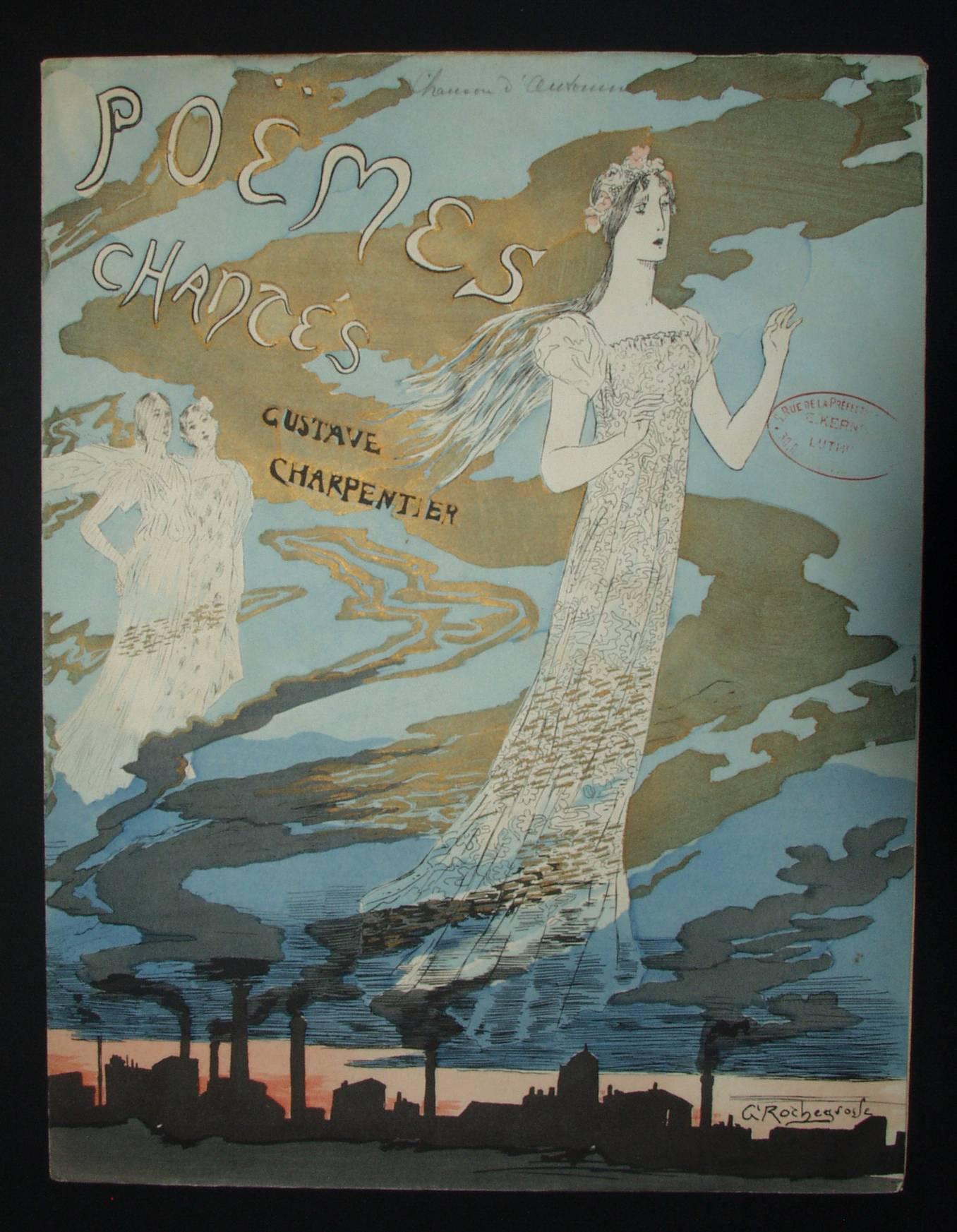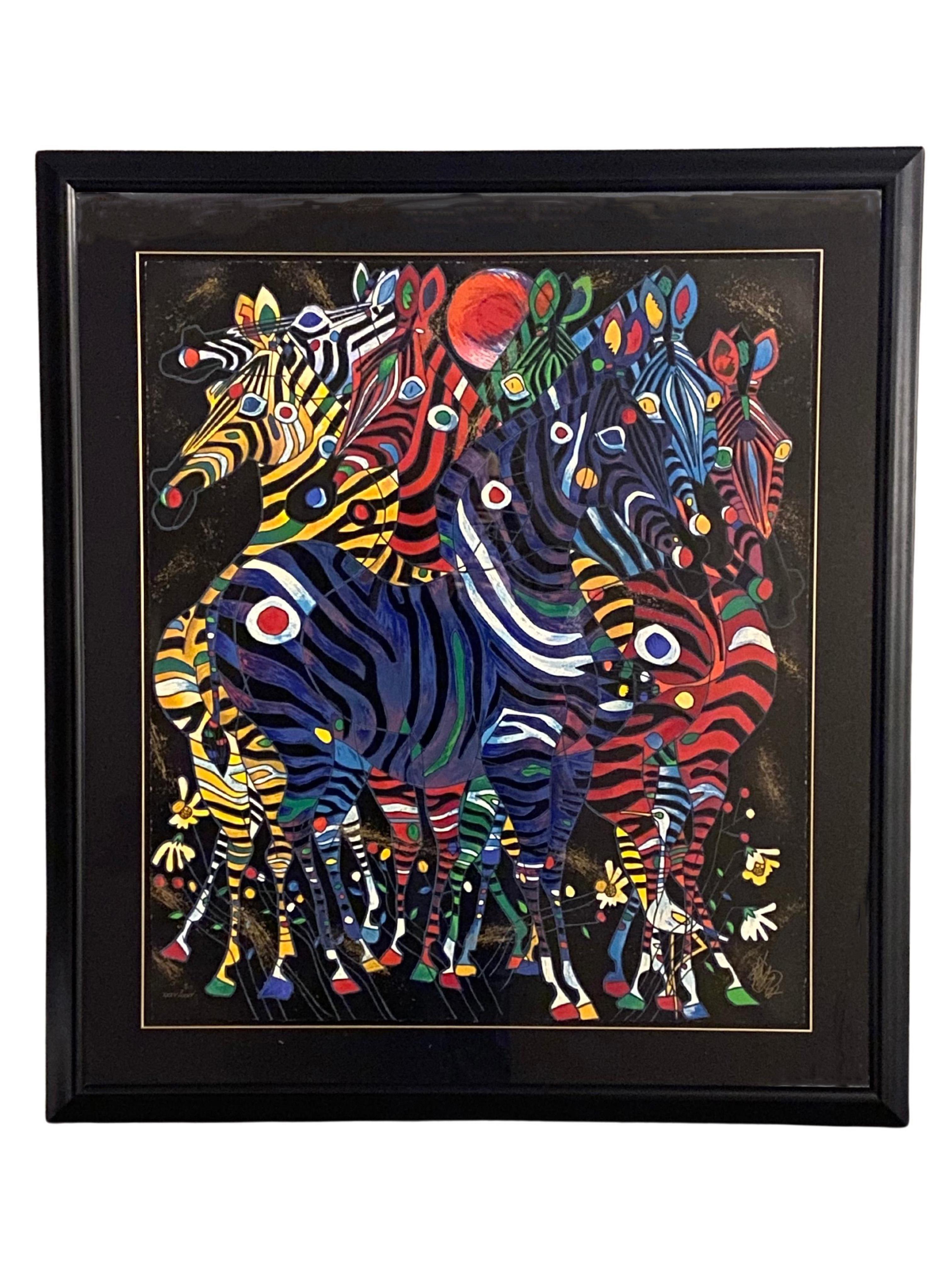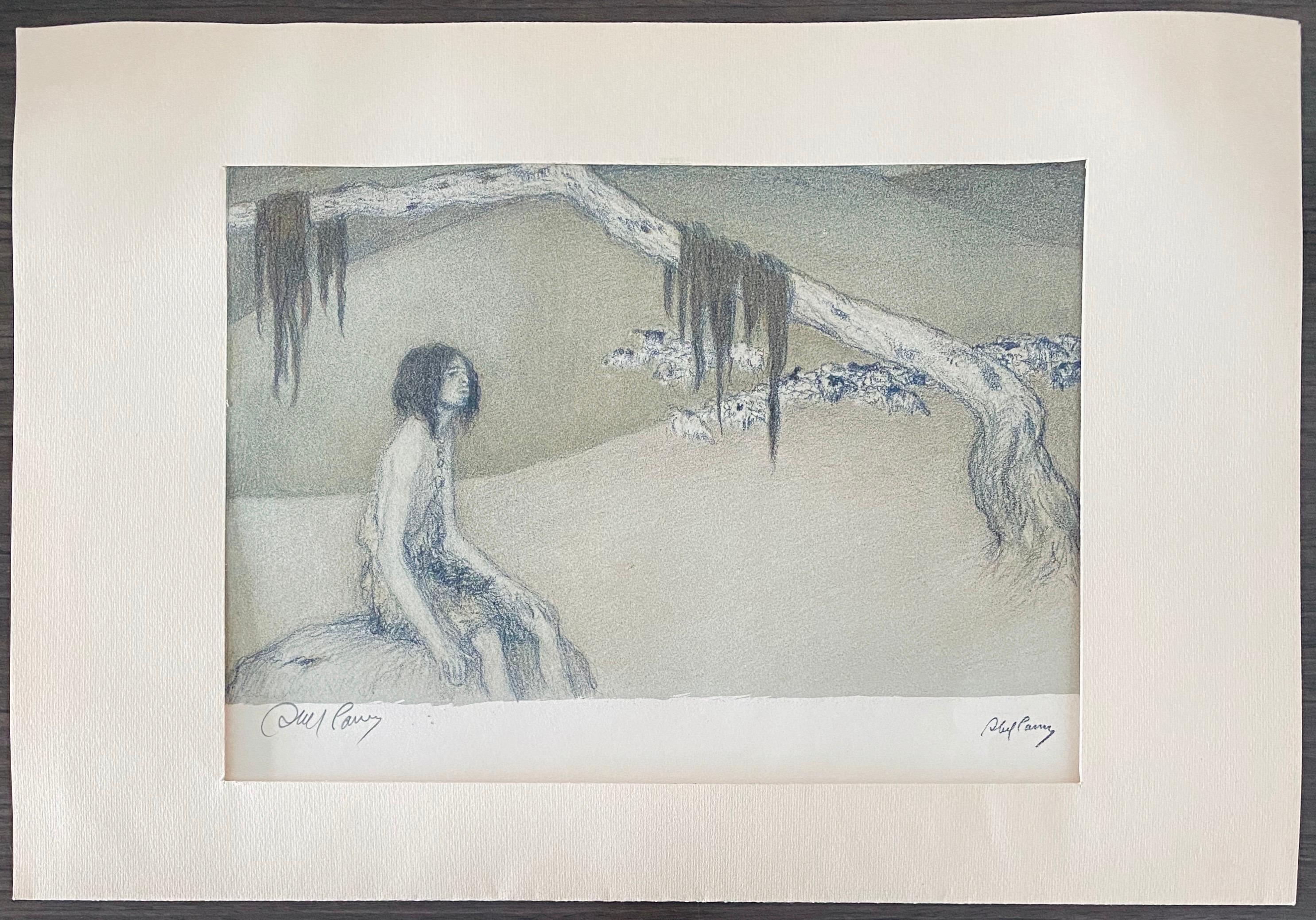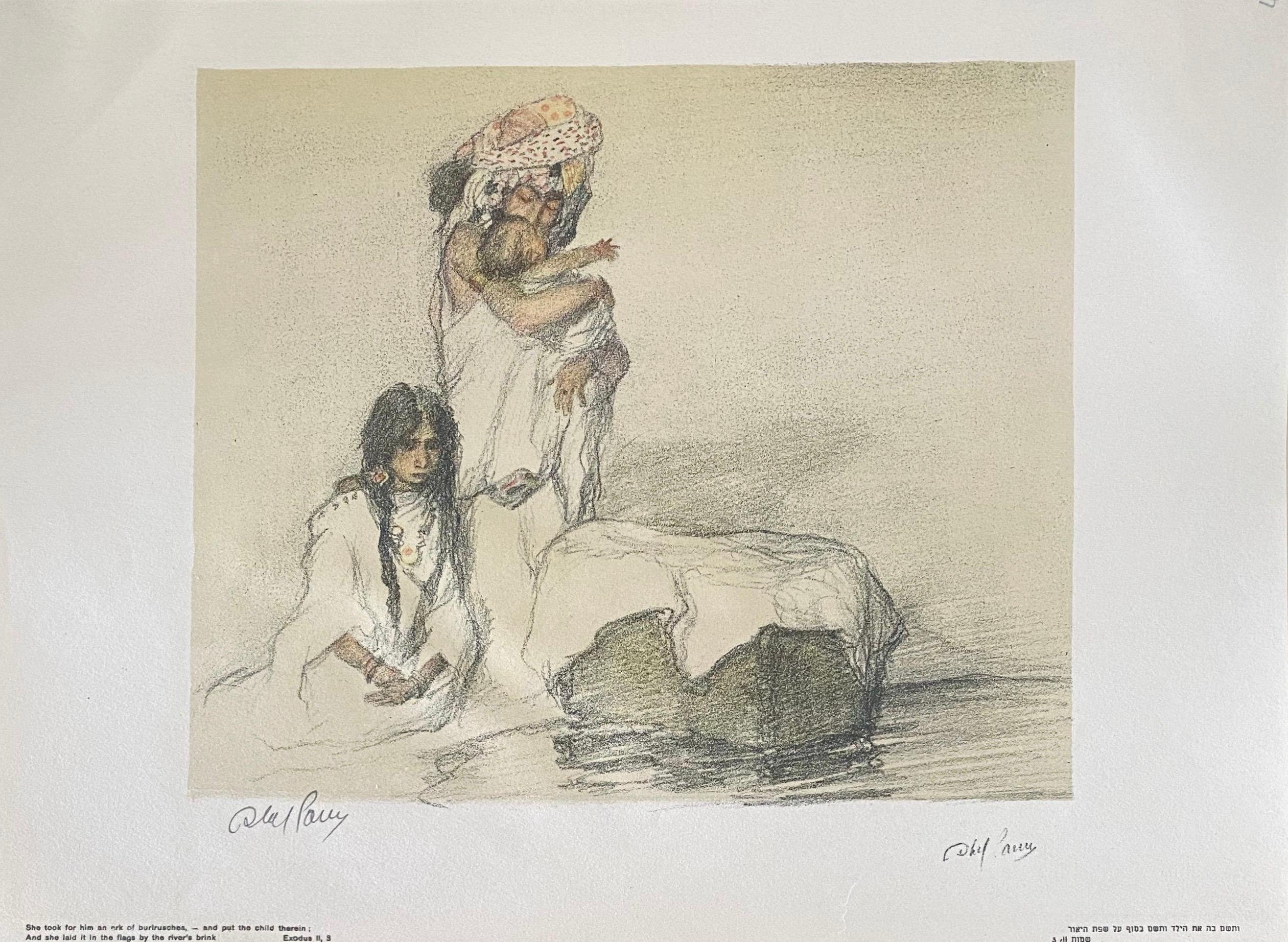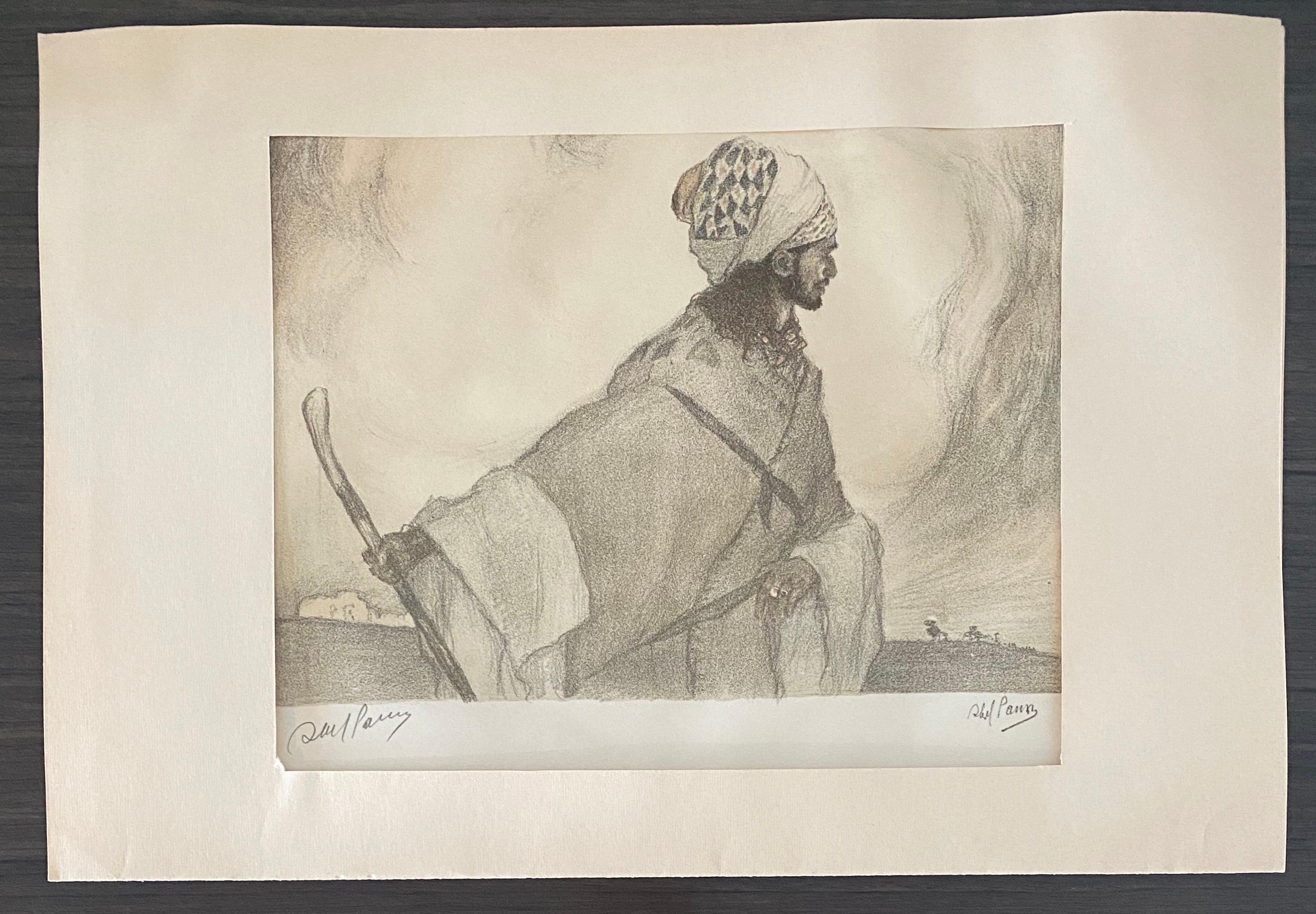Items Similar to Le Fondeur Paris [Steel Worker]
Want more images or videos?
Request additional images or videos from the seller
1 of 4
Eugène CarrièreLe Fondeur Paris [Steel Worker]1900
1900
About the Item
Carriere, Eugene. Le Fondeur, Paris 1900 [Steel Worker], Color lithograph.
Ref: Das Fruhe Plakat 134. 51 x 34 3/4 inches.
Eugène Anatole Carrière (16 January 1849 – 27 March 1906) was a French Symbolist artist of the Fin de siècle period. His paintings are best known for their brown monochrome palette. He was a close friend of the sculptor Rodin and his work influenced Picasso. Some see traces of Carrière's monochrome style in Picasso's Blue Period.
- Creator:Eugène Carrière (1849 - 1906, French)
- Creation Year:1900
- Dimensions:Height: 51 in (129.54 cm)Width: 34.75 in (88.27 cm)
- Medium:
- Movement & Style:
- Period:
- Condition:
- Gallery Location:New York, NY
- Reference Number:1stDibs: LU29227365512
About the Seller
5.0
Vetted Seller
These experienced sellers undergo a comprehensive evaluation by our team of in-house experts.
1stDibs seller since 2015
54 sales on 1stDibs
Typical response time: 13 hours
Associations
International Fine Print Dealers Association
- ShippingRetrieving quote...Ships From: New York, NY
- Return PolicyA return for this item may be initiated within 7 days of delivery.
More From This SellerView All
- Antoine Georges Marie RochgrosseBy Georges Antoine RochegrosseLocated in New York, NYRochgrosse, Antoine Georges Marie. Poems Chantes/Gustave Carpentier /Paris/Henri Tellier, Editeur. 1896. 7 Color lithograph. Das fruhe Plakat 750 (Music Sheet). French painter, pri...Category
1880s Symbolist Figurative Prints
MaterialsLithograph
- BOSBOOM. 1917.Located in New York, NYROLAND HOLST, R.N. (Richard) (1868-1938). “Eere Tentoonstelling Bosboom/ 1817 1917/ Pulchri-Studio ‘s Gravenhage/ 21 Apr[il] 31 Mei”. Color lithograph (pa...Category
1910s Symbolist Figurative Prints
MaterialsLithograph
- Edinburgh on the London and Northeastern Railway of England and ScotlandBy Fred TaylorLocated in New York, NYColor lithograph. ca. 1925 On Linen. Fred Taylor was one of Britain's foremost poster artists from 1908 to the 1940s. Able to turn his hand to most subjects, Taylor was best k...Category
1920s Art Deco Figurative Prints
MaterialsLithograph
- Ouverture de la Chasse ua Bois de BoulogneBy George GoursatLocated in New York, NYSem, (George Goursart). Ouverture de la Chasse ua Bois de Boulogne.. Ca 1900. Signed in the stone. Slight center vertical fold, otherwise in very good condition. Signed in the sto...Category
Early 1900s Art Nouveau Figurative Prints
MaterialsLithograph
- Geef Het Boek Van PTTBy Piet ZwartLocated in New York, NYGeef Het Boek Van PTT. Photomontage Poster adverstising the Het Boek van PTT. Leiden 1938. Extremely rare. Fine condition. A pioneer of modern typography...Category
1930s De Stijl Figurative Prints
MaterialsLithograph
- CorrineBy Maurice Réalier-DumasLocated in New York, NYMaurice Realier-Dumas Corrine.Plate from May 1897 issue of L'Estampe Modern. Color Lithograph. Sheet Size: 16 x 12". L'Estampe Moderne was a brilliant portfolio printed betwe...Category
1890s Art Nouveau Figurative Prints
MaterialsLithograph
You May Also Like
- "Harmony" Colorful Zebras Lithograph by Chinese Artist Jiang Tie-Feng #35/75Located in Pasadena, CAThe serigraph on paper signed and numbered 35/75 rests in a black lacquer frame. It features a multicolor zebras gathering, one very thought after subject from this artist. Chinese A...Category
1970s Symbolist Animal Prints
MaterialsLithograph
- Abel Pann Israeli Bezalel School Lithograph Judaica Biblical Print Jewish ArtBy Abel PannLocated in Surfside, FLAbel Pann (1883–1963) was a European Jewish painter who settled in the Talpiot neighborhood of Jerusalem in the early twentieth century and taught at the Bezalel Academy of Art under Boris Schatz. Abba Pfeffermann (later Abel Pann), born in Latvia or in Kreskowka, Vitebsk, Belarus, was a European Russian Jewish art...Category
Mid-20th Century Symbolist Figurative Prints
MaterialsLithograph
- Abel Pann Israeli Bezalel School Lithograph Judaica Biblical Print Jewish ArtBy Abel PannLocated in Surfside, FLAbel Pann (1883–1963) was a European Jewish painter who settled in the Talpiot neighborhood of Jerusalem in the early twentieth century and taught at the Bezalel Academy of Art under...Category
Mid-20th Century Symbolist Figurative Prints
MaterialsLithograph
- Abel Pann Israeli Bezalel School Lithograph Judaica Biblical Print Jewish ArtBy Abel PannLocated in Surfside, FLAbel Pann (1883–1963) was a European Jewish painter who settled in the Talpiot neighborhood of Jerusalem in the early twentieth century and taught at the Bezalel Academy of Art under...Category
Mid-20th Century Symbolist Figurative Prints
MaterialsLithograph
- Abel Pann Israeli Bezalel School Lithograph Judaica Biblical Print Jewish ArtBy Abel PannLocated in Surfside, FLAbel Pann (1883–1963) was a European Jewish painter who settled in the Talpiot neighborhood of Jerusalem in the early twentieth century and taught at the Bezalel Academy of Art under Boris Schatz. Abba Pfeffermann (later Abel Pann), born in Latvia or in Kreskowka, Vitebsk, Belarus, was a European Russian Jewish art...Category
Mid-20th Century Symbolist Figurative Prints
MaterialsLithograph
- Abel Pann Israeli Bezalel School Lithograph Judaica Biblical Print Jewish ArtBy Abel PannLocated in Surfside, FLAbel Pann (1883–1963) was a European Jewish painter who settled in the Talpiot neighborhood of Jerusalem in the early twentieth century and taught at the Bezalel Academy of Art under Boris Schatz. Abba Pfeffermann (later Abel Pann), born in Latvia or in Kreskowka, Vitebsk, Belarus, was a European Russian Jewish artist who immigrated to Ottoman Palestine and settled in Jerusalem. He was married to Esther Nussbaum. Pann's youngest son was killed in the 1947–1949 Palestine war. After that loss, he turned to painting scenes of the Holocaust. He died in Jerusalem in 1963. Pann studied the fundamentals of drawing for three months with the painter Yehuda Pen of Vitebsk, who also taught Marc Chagall. In his youth, he traveled in Russia and Poland, earning a living mainly as an apprentice in sign workshops. In 1898 he went south to Odessa, where he was accepted into the Academy of Fine Arts. In 1903, he was in Kishinev, where he documented the Kishinev pogrom with drawings; an effort that is thought to have contributed to his self-definition as an artist who chronicles Jewish history. Still in 1903, he moved to Paris, where he rented rooms in La Ruche, a Parisian building (which still exists) where Modigliani, Chagall, Chaim Soutine and other Jewish artists also lived. Pann studied at the French Academy under William-Adolphe Bouguereau. He earned his living primarily by drawing pictures for the popular illustrated newspapers of the era. In 1912, Boris Schatz, founder and director of the Bezalel Academy of Arts and Design visited Pann in Paris and invited him to come work in Jerusalem. In 1913, after traveling in Southern Europe and Egypt, Pann arrived in Jerusalem, where he had decided to settle for life. Pann went to see Schatz and it was decided that he would head the painting department at the Bezalel Academy for several months while Schatz embarked on an extensive overseas fund-raising trip. According to Haaretz art critic Smadar Sheffi, a work form this period with the simple title "Jerusalem" shows a cluster of buildings at sunset "with a sky in blazing orange." The painting is "more expressive and abstract that is typical of his work," and Sheffi speculates that "the encounter with the city" of Jerusalem was a "strong emotional experience" for the artist. Pann returned to Europe to arrange his affairs before moving permanently to the British Mandate of Palestine, but was caught on the continent by World War I. Pann's wartime paintings would prove to be among "the most important" of his career. He made many posters to support the French war effort. He also made a series of fifty drawings showing the extreme suffering of Jewish communities caught in the fighting between Germany, Poland and Russia. Art critic Smadar Sheffi regards them as "the most important part of his oeuvre." These "shocking" drawings put modern viewers in mind of depictions of the Holocaust. Pann's drawings were intended as journalistic documentation of the fighting and were successfully exhibited in the United States during the War. According to Pann's autobiography, the Russians, who were allied with the French, refused to allow a wartime exhibition of the drawings in France. According to The New York Times, the drawings were published in Paris during the war, but the government intervened to block their distribution on the grounds that they "reflected damagingly upon an ally" (Russia). Upon his return to Jerusalem in 1920, Pann took up a teaching position at the Bezalel Academy and wrote that he was about to embark on his life-work, the painting and drawing of scenes from the Hebrew Bible. He returned briefly to Vienna, where he met and married Esther Nussbaum and purchased a lithographic press, which the couple brought home to Jerusalem. Pann began work on a series of lithographs intended to be published in an enormous illustrated Bible, and although that series was never completed, he is widely admired for the series of pastels inspired by Bible stories that he began in the 1940s. The iconography of these works is linked to the 19th century orientalism. He was part of a movement of contemporary Jewish artists interested in Biblical scenes, including Ephraim Moses Lilien...Category
Mid-20th Century Symbolist Figurative Prints
MaterialsLithograph
Recently Viewed
View AllMore Ways To Browse
Blue Period
Paris 1900
Steel Worker
Anatole France
Symbolist Paintings Period
Picasso Steel
Rodin Lithographs
Eugene Carriere
Italian Renaissance Engraving
Haring Pop Shop
Antique Travel Print
Woodblock Beauty
Vintage 1930s Jazz
Pop Shop Keith
Louis Vuitton Painting
Louis Vuitton Framed Art
Rome Copper Print
1962 Italian Film
